-
-
-
-
-
-
-
-
-
-
-
-
-
-
-
-
-

Selling this original NJS stamped Samson Keirin bike.
Size is seat tube CT 57 / Top tupe CC 54Specs.:
-Samson NJS stamped frame
-Nitto Jaguar NJS stem
-Nitto NJS bar with Keirin grips
-Nitto NJS seatpost
-Nitto NJS headset
-Dura Ace NJS crankset
-MKS pedals with double straps.
-Kashimax FiveGold seat
-Mavic Tubular rims.
-OnOne fixed/fixed track hubs.
-Continental Gatorskin tires
-Clamp on front brake+Touch up Paint (with clear) in original color!
Gear Ratio is 47 with cogs 16T and 17T (fixed/fixed)
I want £695 total with shipping. Inclusive PayPal fee!
I can be open to sensible offers...The bike is located in Norway, ship worldwide!
E-mail: richard@rickart.no
-
-

Very nice, what are the cranks?
Thanx! The crancks are Suntour Superbe PRO. That's the original cranck...
This is how it was before the fixing...

Here's the picture from the catalog!
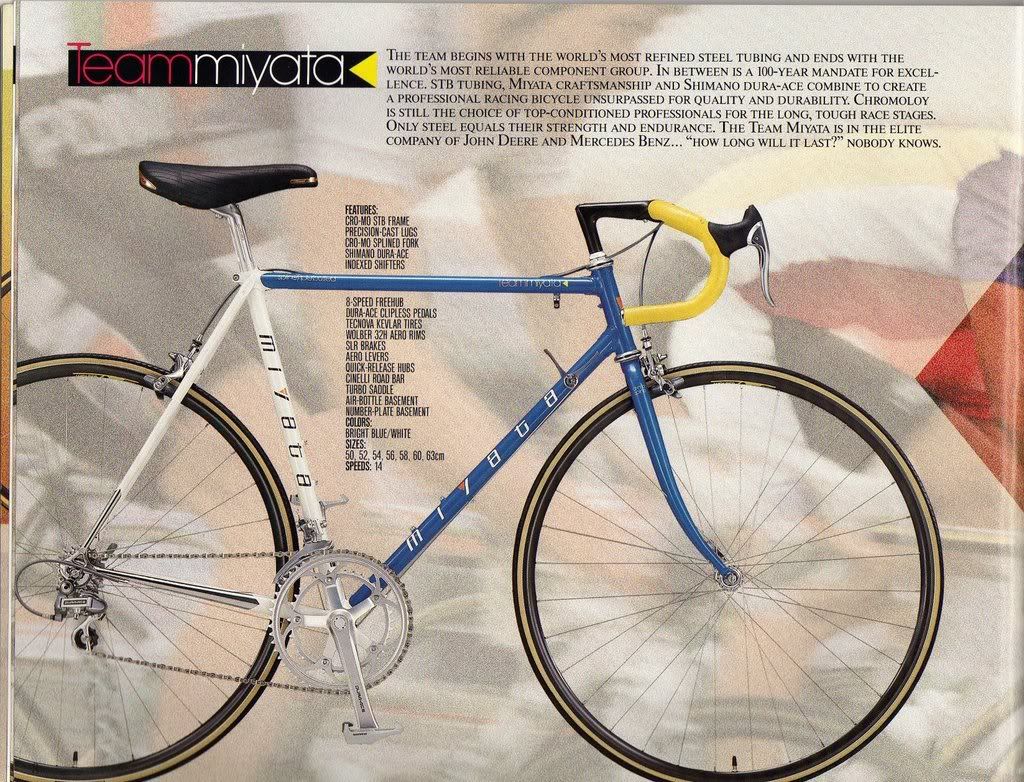
And here's a story on the frame:
Top-of-the-line from 1990!!
All steel tubing**Product Description: **
**This item is a new-old-stock Miyata Team frame and fork with proprietary splined triple butted steel tubing and a matching splined steel fork. Although we are not certain, we believe the reference to splined tubing is akin to the inner ribs we sometimes note on vintage high quality seatposts (located on the inside of the pillar and stretching the length of the pillar). Presumably, Miyata fabricated their tubing in this manner to improve the strength/stiffness of this competition-level frame and fork. We have also come to learn that this was Miyata's top-of-the-line offering from 1990 in a road steel frame and fork. **
The fork is curved-bladed with a 1" threaded steerer tube and like the frame...is made from splined steel tubing. The finish has a two-tone color scheme with a deep blue enamel covering most of the main triangle (except for the seat tube) and the fork, while the rear triangle has been finished with a nice pearl white enamel. The lug work has also received some attention, with an "M" logo incorporated into the design of some of the lugs for added aesthetic appeal. We understand there may have been some better quality steel frames coming out of Japan in the early 90's, but this offering is easily the nicest model we have come across from Japan during this era.Frame size (seat tube length): 56 cm
(factory specification measured from the center of the bottom bracket shell to the top of the seat tube...an equivalent center-to-center measurement...meaning from the center of the bottom bracket shell to the center of the top tube would be about 54 cm)Weight (frame and forks): 6 lbs 8 oz (source is our own Park hanging scale)
Rear dropout spacing: 130 mm
Top tube length: 55 cm
Head tube angle: 73 degrees
Seat tube angle: 74 degrees
Wheelbase: 99.5 cm
Chain stay length: 40.8 cm
Fork rake: 45 mm
Head tube inside diameter (for headset): 25.4 mm
Seat tube inside diameter (for seatpost): 26.8 mm
Seat tube outside diameter (for clamp-on front derailleur): N/A...braze-on model
Bottom bracket shell width: 68 mm
**Braze-ons: Shifter lever bosses on the down tube (may be fitted with cable housing stops when dual-control levers are used), braze-on front derailleur mount, brake cable housing guides on the top tube (three of them), shifter cable housing stop **
on the right chain stay, water bottle cage mounts on the down tube and the seat tube, air bottle mount on the underside of the down tube, number plate fitting on the top tube (near the head tube), pump peg on the head tube and chain peg on the right chain stayOther notes: English/ISO specifications throughout, horizontal rear dropouts with built-in derailleur hanger, recessed brake caliper mounting holes, cable guide block on the underside of the bottom bracket shell.
Angles.
**We believe most would agree that head tube and seat tube angles have a fairly significant impact on ride qualities...with the emphasis on the head tube angle. These angles may range anywhere from 68 degrees to 75 degrees. The shallower the angle, the more stable and comfortable the ride should be at lower speeds, while steeper angles promote a more responsive/rigid feel that generally handles better at higher speeds (but is usually less comfortable). We realize this is a very simplistic view to the angle discussion and we acknowledge there are other angle related concepts (the "trail" measurement as one such example...discussed below), but we really are trying to limit our comments to a few points concerning each topic. **
**Please note this offering has rather steep angle measurements, so while the ride may be responsive and handling may be fairly good at higher speeds, the frame may also be somewhat unforgiving...i.e., not as comfortable as a frame with shallower angle measurements. **
Other measurements.
**The wheelbase measurement also appears to impact ride qualities. A general rule of thumb is that a longer wheelbase results in a more comfortable ride at lower speeds (similar to the shallower angle discussion noted above), while a shorter wheelbase will promote a more responsive/performance oriented feel that generally handles better at higher speeds (but the drawbacks are predictable in that improved high-speed handling qualities generally result is less comfortable overall ride characteristics). In an attempt to provide some basic guidelines, wheelbase measurements generally range from around 100 cm (or less) to nearly 110 cm...with ride qualities described above dependent on where a measurement is positioned on this continuum. **
**The chain stay measurement is a component of the wheelbase, so it's not surprising to note a consistency between the two measurements. In other words, a shorter chainstay measurement will shorten the wheelbase and generally translates into more responsive/performance oriented ride characteristics with better acceleration and climbing qualities. The drawbacks (to a shorter chain stay) are consistent with the discussion above in that such positive handling qualities at higher speeds will generally result in a less comfortable ride at lower speeds. A longer chain stay measurement, similar to a longer wheelbase measurement, will usually improve overall ride comfort, while conceding some of the high-speed responsiveness achieved with shorter dimensions. Lastly, in an attempt to provide some additional guidelines, chain stay measurements generally range from around 40 cm to 45 cm (or possibly longer) with ride qualities described above dependent on where a measurement is positioned on this continuum. **
**Fork rake, like the chain stay measurement, is a component of the wheelbase...but to a lesser degree. A longer fork rake, as in the case of a steel touring fork with exaggerated curves, will generally provide fairly significant road dampening qualities. From our own personal experience, we always noted the way a touring-style fork will literally bounce up and down around the dropouts, absorbing the bumps in the road, but this feeling never made it up through the steerer (or at least to the degree noted at the dropouts). We realize there are other factors at work here, but we still wanted to provide one example of the impact fork rake may have on ride comfort. Another thought regarding fork rake is it's impact on the "trail" of a bicycle. This could turn into a lengthy discussion by itself, but the general concept is the "trail" measurment of a bicycle significantly impacts the stability of the ride, or said another way, the bicycle handling properties that promote straight ahead steering. Generally speaking, the longer the "trail" the greater the inherent tendency the bicycle will track in a straight line. A shallower head tube angle and a shorter fork rake are probably the most significant contributors to a longer (and preferred) "trail" measurement. Our general assumption here is that frame manufactures have long since incorporated the preferred "trail" measurements in their frame and fork designs, so the fork rake and head tube angle should compliment one another in this regard. **
**Please note the dimensions (wheelbase, chain stay, etc.) are fairly short, so consistent with the angle measurement discussion above, this frame should be fairly responsive and perform fairly well at higher speeds, but it probably will not be as comfortable (relative to a frame with longer dimensions). We do not view the fork rake as having a significant impact on the ride qualities of this particular offering (in the sense that it will not influence handling or performance to the degree of the other noted specifications). **Materials.
**Most vintage frames were made with steel tubes and although there were different brands/types...this was the preferred material for many years. Steel is generally the heaviest of the material choices, but some still prefer the ride qualities of a steel frame. Generally speaking, steel frames may retain several desirable high-speed ride qualities...responsiveness, good acceleration, etc...while the inherent dampening qualities of steel help to alleviate some of the rigid/uncomfortable ride characteristics that usually accompany high-speed performance. **
**Aluminum frames were probably next to achieve some level of commercial appeal...and while it's a lighter material, aluminum frames are generally stiffer and provide a harsher ride (relative to a similarly constructed steel frame). Having said this, aluminum frames generally retain many of the high-speed ride qualities and superior climbing qualities (due to their light weight) desired by more competitive cyclists. Some would also note that aluminum frames are generally a good candidate for lighter riders, while heavier/stronger riders that generate a lot of torque may want to look at other material options. **
**More recent frame materials gaining popularity include carbon fiber composites and titanium (among others). While frames made with these materials are generally more expensive, there are many that believe their basic properties (in addition to their light weight) help to achieve the most desirable combination of ride qualities (i.e., high-speed performance/responsiveness, while still maintaining comfort and low-speed stability). We believe there is merit to this claim, especially when considering the resources frame manufacturers are dedicating to research and development. **
**Having said all of this, please note this particular offering is a steel frame, so some of the inherent road dampening characteristics (of steel) noted above, may translate into a slightly more comfortable ride, even though this frame also has relatively steep angles and short dimensions. ** -
-
-
-
LFGSS
London Fixed Gear and Single-Speed is a community of predominantly fixed gear and single-speed cyclists in and around London, UK.
This site is supported almost exclusively by donations. Please consider donating a small amount regularly.
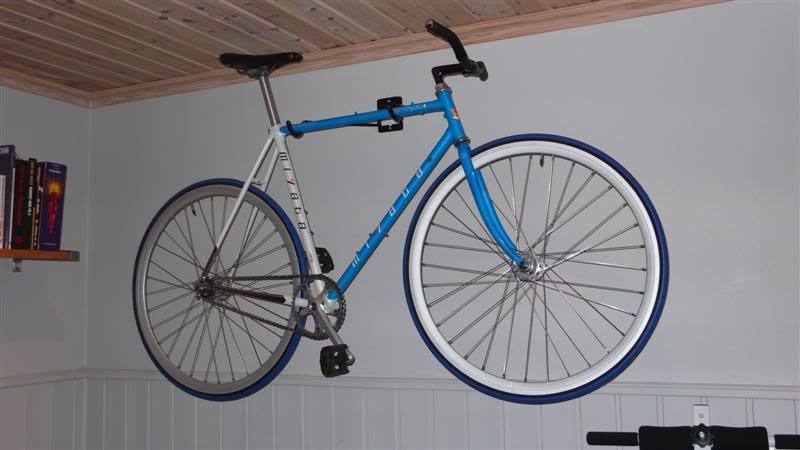
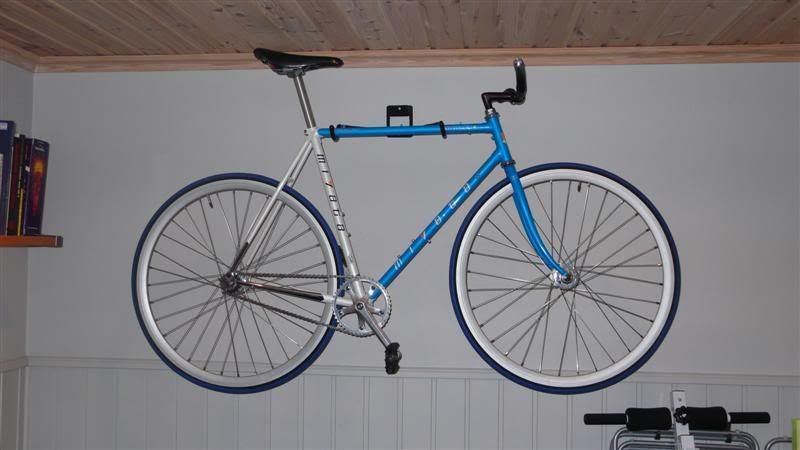
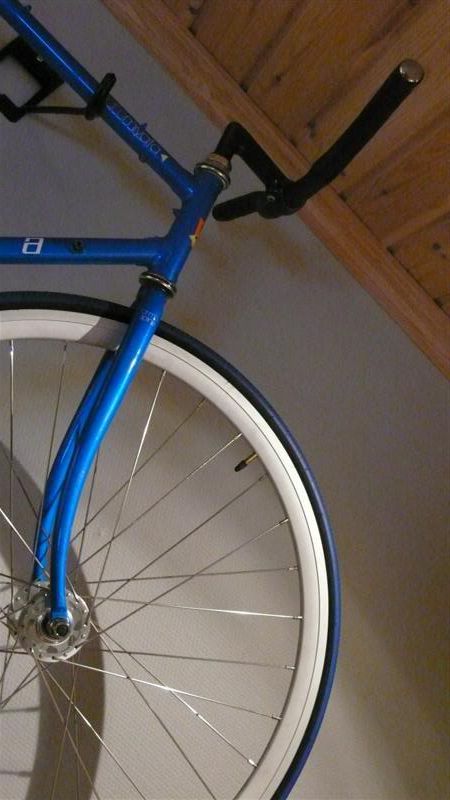
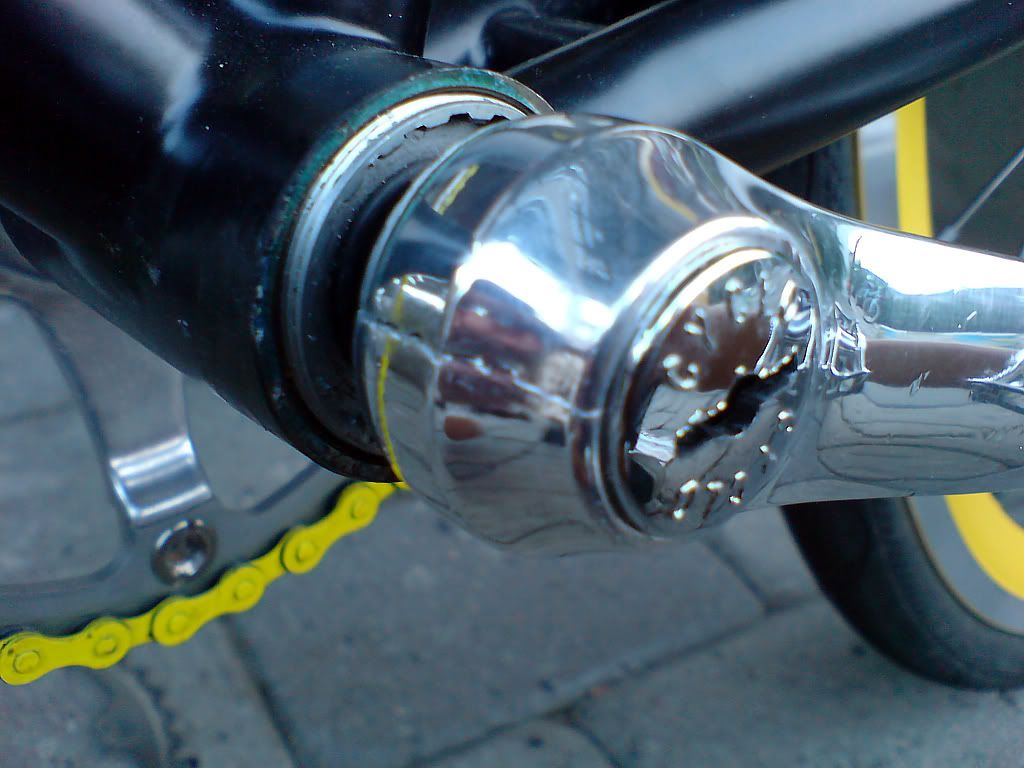
I've had a break from this forum and now I remember why...